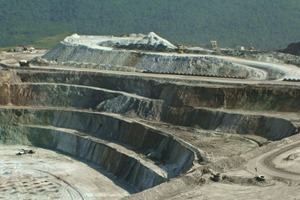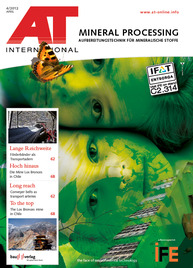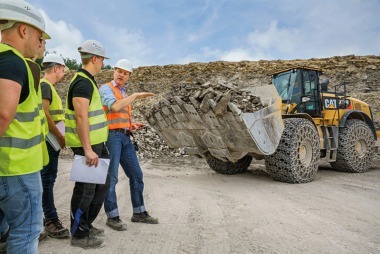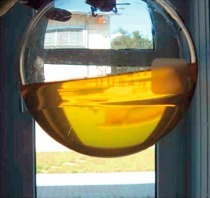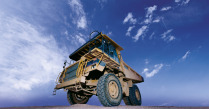GeoResources for the 21st Century
GeoResources in the 21st Century” is the slogan of the 2012 annual meeting of the German Society for Geosciences (DGG), which will be organized in close cooperation with the Federal Institute for Geosciences and Natural Resources (BGR), the German Mineral Resources Agency in the BGR (DERA), the State Office for Mining, Geology and Raw Materials (LBEG), the Leibniz Institute for Applied Geophysics (LIAG) and the Academy of Geosciences and Geotechnologies (AGG) and which is held from 01.-03.10.2012 in Hanover/Germany. For about 10 years we have witnessed the resuming importance of natural resources in the strong rise of commodity prices, by more discussions on the reserves-to-production ratio, on dependencies from supplier countries or companies, through reports on benefits of commodity exploitation for the job market, as well as social and ecological issues concerning the extraction of raw materials. Clearly, we cannot imagine living without making use of commodities. Geoscientific work, in research and practice, results in numerous contributions widening our knowledge and coping with open questions. The spectrum of subjects include among others lectures from the field of “industrial minerals, natural stone, stone and earth industries” as well as “Strategies for securing mineral raw materials supply by raw material efficiency gains”.
As a result of the globalisation of resource trading and the dependencies involved, the safe supply of mineral and energetic raw materials has moved more and more into the focus of public interest during the last few years. Even if the demand of our national economy for oil, natural gas, metallic ores and special industrial minerals can only be met by imports, the domestic extraction and processing of raw materials is still very important. Regarding the amount of raw materials needed in Germany, by far the largest portion falls to the building raw materials rock and associated products, i.e. 8 t per capita and year. They mainly include gravel and sand as well as natural stones (Fig.). Furthermore, there are many domestic industrial minerals, which are used in many fields outside the building industry and which are processed to become high-quality products. It goes without saying that the availability of rocks, earths and industrial minerals is regionally limited by the geological boundary conditions, on the one hand, and, on the other hand, in particular, by competing utilization claims as regards potential extraction areas, e.g. by nature conservation and drinking water protection, building supervision planning and infrastructure projects. In addition to lectures on the reconnaissance of deposits, lectures are welcome as regards raw material securing by means of public planning (regional planning) and the use of raw materials and their substitution by mineral residual products.
The economic growth of emerging nations will inevitably require an increasing supply of mineral raw materials and metals. In the course of the recent commodity boom, fears over the availability of mineral raw materials and metals have frequently been raised. Consequently, various strategies for securing raw material supply have been developed by industry and politics in the past few years. This includes diversification strategies in the primary sector and strategies to improve the efficiency in mineral production and processing. This session addresses assessment methods to identify potential future supply risk patterns and measures to counteract supply disruptions. As part of these possible measures more efficient mining and processing methods including extraction of by-products and utilisation of tailings will be presented.
The team organizing the GeoHannover 2012 invites to look for answers, to present solutions, and not last to get to know the most recent scientific findings on these issues. Abstracts can be submitted until 30.04.2012 to geohannover@fu-confirm.de using the abstract template provided at
www.geohannover-2012.de.

